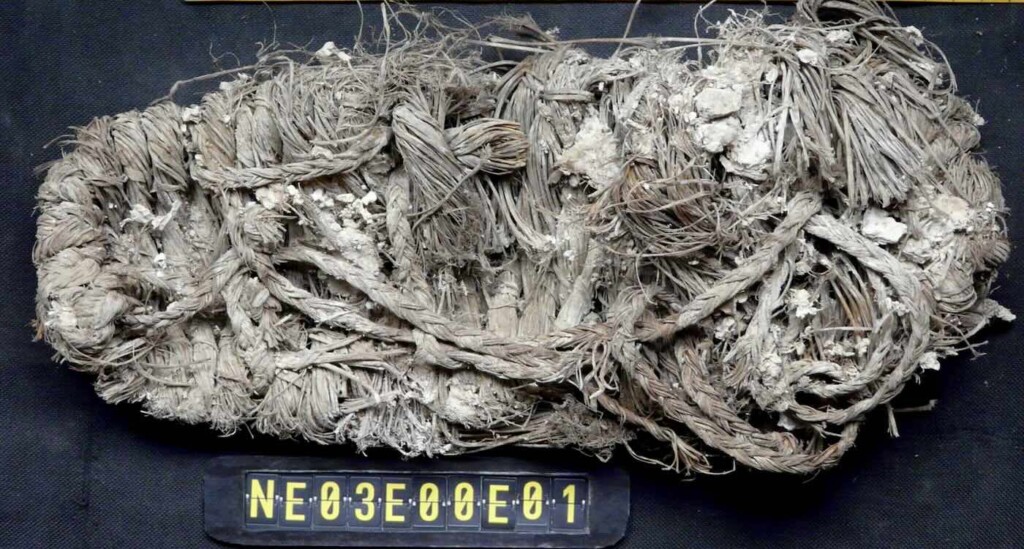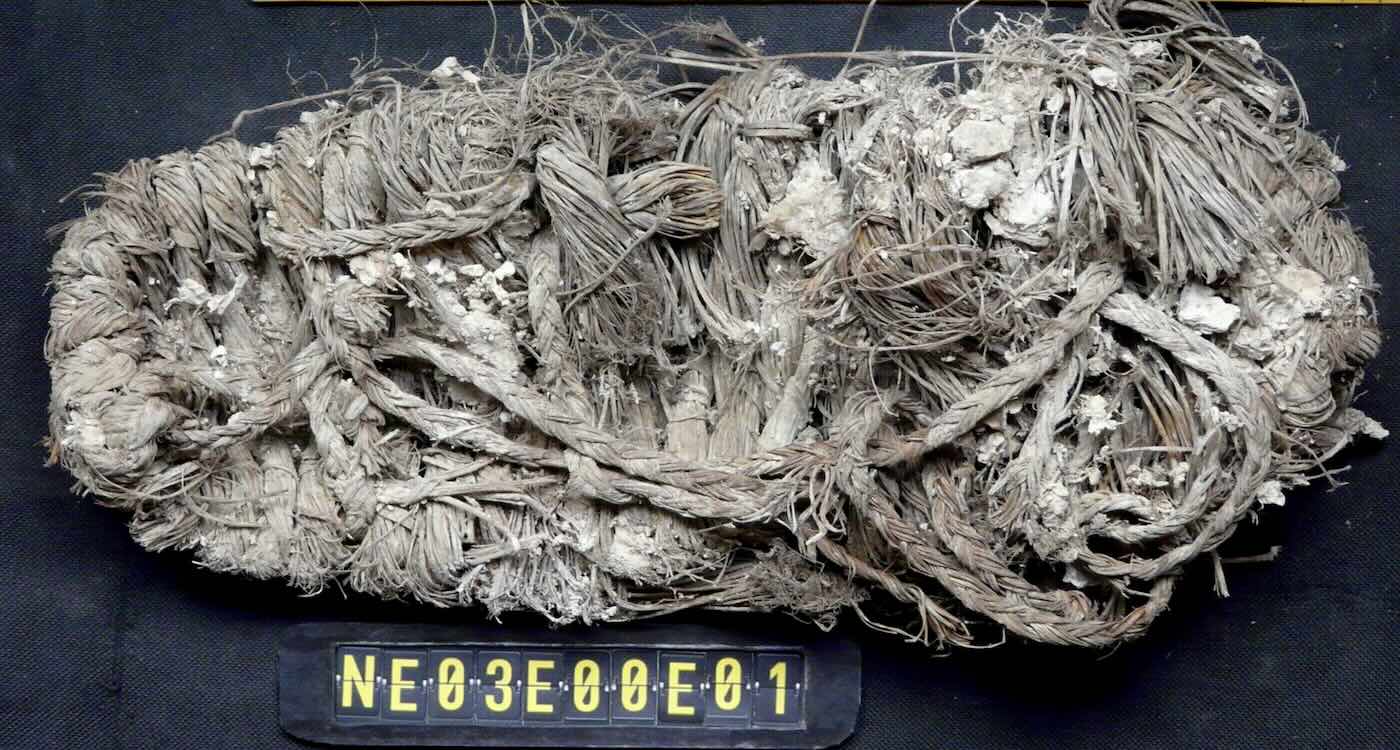 Found in ancient Bearded Vulture nest- an Agobía sandal made of grass and twigs c. 674 – Credit: Lucía Agudo Pérez, CC By 4.0
Found in ancient Bearded Vulture nest- an Agobía sandal made of grass and twigs c. 674 – Credit: Lucía Agudo Pérez, CC By 4.0
Researchers in Spain were left feeling a mixture of confusion and intrigue when they found several straw sandals embedded in a bearded vulture nest.
They didn’t know it at the time, but it was over 6 centuries ago that a bearded vulture flew from its hunting grounds into a sheltered cave nesting site and dropped off a sandal called an Agobía.
There it lay, fulfilling who-can-say what purpose, until ecologist Antoni Margalida pulled it and many other human artifacts, some as old, others younger, from the abandoned nest.
Vultures, like raptors of all kinds, tend to reuse nests generation after generation. A study was published on the discovery and was picked up by National Geographic, which went on to explain that one golden eagle nest was documented to be 20 feet in depth from parents adding material to it, while in Greenland, analysis of bird droppings below a gyrfalcon nest proved it to be 2,000 years old.
With that context, suddenly the Agobía doesn’t seem so far-fetched, but many other objects such as tools, sandals, a piece of a basket, a dyed scrap of sheep’s leather, and the carved horn of a mountain goat.
Included in the mix was a crossbow bolt, which may have been taken in lieu of a branch, or because it was embedded in an animal the vulture brought back to its nest.
“This material is very well-preserved during centuries,” Margalida, from the Pyrenean Institute of Ecology in Spain, told Nat Geo.
The cave ecosystem prevented them from erosion by the elements, and the nests, which Margalida and his team reached by rappelling down into the cave, took on the character of a natural history museum. Studying bearded vulture nests can help ecologists glean insights into why the birds had disappeared from the area.
MORE FAR-FEATHERED STORIES: UK’s Rarest Breeding Birds Raise Chicks for First Time in Six Years
To that end various eggshells and feathers found in the nests could contain traces of toxic compounds like lead known to be harmful to vultures and scavenging birds, but they had to separate them out from nearly 2,100 pieces of bone, including 86 hooves.
“We have several ideas to analyze in the future,” Margalida says. “I think that this material will offer a lot of possibilities.”
SHARE The Story Of This Wild Discovery Up In Spain With Your Friends…

